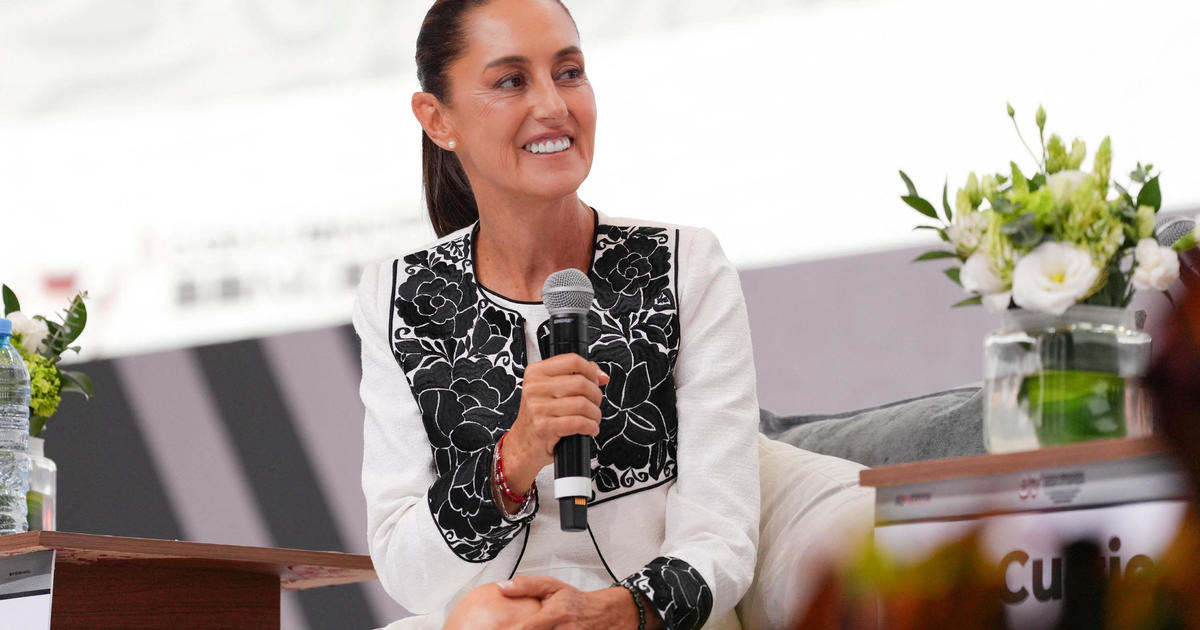How startups are revolutionizing men's underwear
Men’s underwear is becoming the stuff of startups. Entrepreneurs are disrupting this once-sleepy category into one of the fastest-growing sectors in fashion. And they’ve done it in part with free advertising from celebrities like Howard Stern and Kevin Hart, who can’t stop mentioning their unmentionables, reports CBS News contributor Jamie Wax.
Earlier this fall, Hart stopped by the set of his latest starring role: the new offices of a men’s underwear company.
“I’m going to switch things up around here,” Hart said.
Tom Patterson, founder and CEO of Tommy John, plays the role of the straight man sidekick. But this unlikely pairing is not the scenario of Hart’s next comedy.
“I was a frustrated medical device salesman wearing a suit and tie every day. And my undershirt seemed to be form-fitting for a UPS box,” Patterson said. “So I thought, ‘What if I buy some fabric, take a sketch to a dry cleaner’s that has a tailor a couple blocks down from the street and just have her make some prototypes?’”
“Do you remember how you felt the first time you put the T-shirt you designed on?” Wax asked.
“I was jumping up and down. I was actually doing headstands against a wall to show my wife how it doesn’t come off,” Patterson said, laughing. “It doesn’t come undone.”
Patterson and his wife Erin launched the company eight years ago. To get his patented stay-tuck-guaranteed shirts into department stores, Patterson turned his technique to underwear. It’s a plot twist that earned him a very influential customer.
“So we had an employee come up to me and said, ‘Tom, Tom, Kevin Hart’s dancing around in our underwear on Instagram,’” Patterson said. “She shows me on a phone. I’m like, ‘That’s pretty cool.’”
Hart had bought the underwear at a department store.
“We’re on the road and we’re in a store. And I’m like, ‘Man, I just need some underwear. I’m out.’ You know, last thing you want to be on a road is dude with the dirty drawers… flip your drawers inside out to get another use of ‘em,” Hart said, laughing. “So I went to store. I stumbled upon Tommy John. I felt them, I was like, ‘Oh, feel how soft these are.’ I’m with my friends. I’m like, ‘Yo, am I tripping or are these soft?’ ‘Yeah, no they’re soft.’”
And so he bought them. With 95 million social media followers and upwards of $87 million in earnings last year from movies and stand-up, Hart has become one of the most influential people in the world.
But the self-described authentic comedian wanted to be less show and more business.
“Some people can just be a NASCAR. By NASCAR I mean you got stickers all over you,” Hart said. “Well, at some point in time, people can see through that.”
Celebrity endorsements made men’s underwear trendy in the early ‘90s. But Hart wanted to be an investor, not just an ad man. At first, Patterson wasn’t sold on the idea.
“Did you like that -- that they weren’t really looking for you?” Wax asked.
“I had to convince them. I had to convince them that I was… a good idea, which pissed me off because I was a big deal at the time,” Hart said. “I was a real big deal at the time so I didn’t like the fact that I had to convince him that this was the way to go and I had to explain to him: ‘I just want to be a part of what I love. Like, I honestly love your brand.’ That’s when I said, ‘Let me put my money where my mouth is. Let me invest in your product so you can see how serious I am.’”
There’s a lot of money being invested in men’s undergarments these days. It’s become a billion-dollar industry, with startups from coast to coast, including MeUndies in Los Angeles.
“Every month we come out with new designs,” said Jonathan Shokrian.
Shokrian launched his company as an online-only subscription service for men in 2011. His undies are derived from beech trees sourced from a company in Austria and the elastic fibers from Italy. The company said it’s sold more than three million pairs.
“I just felt like there was a disconnect between what was being deemed as premium wasn’t indeed premium and really wanted to set out to make a more affordable product that’s extremely comfortable and a brand that resonated with people,” Shokrian said.
These days, they offer underwear a la carte for men and now women. They even offer his and hers.
“How does a guy go from finance to underwear?” Wax asked.
“I guess I had a little bit of a midlife crisis,” said MeUndies CEO Bryan Lalezarian, who left a career in banking for boxers.
“To make it easier for the customer, we’ve really categorized all of our colors -- classic meaning bold, navy, grey -- things you can wear every day. Bold meaning purple, bright colors, pinks, greens, etc. And then adventurous is kind of where we go wild,” Lalezarian said. “I’m wearing all black, I mean, I tend to look really simple on the outside, but on the inside, only I know, today I’m wearing pink donuts.”
Back at Tommy John, they’re celebrating their two-millionth pair sold. Along with COO John Wu, they have 57 employees, including a seven-person design and development team solving problems like a more efficient fly and other touchy subjects.
“Talking about a quick-draw fly, a no-wedgie guarantee -- these are problems that guys have that every other brand has been scared to talk about or not comfortable talking about,” Patterson said.
“Do we not know that our underwear could be better and more comfortable?” Wax asked. “Do you have to teach the consumer that?“
“That’s a great question,” Hart said. “You know, when he’s saying no-wedgie guarantee, you don’t think about things like that until you go through a day and you didn’t pick a wedgie one time. And you go, ‘Man, wait a minute, normally at 2:00 I’m picking wedgies. It’s 3:30. I ain’t picked a wedgie yet. What do I have on?’”
That comes at a cost with trunks averaging $30 and undershirts $40.
“You have to find sewing partners, fabric partners that can really bring this idea into a product. And it’s typically more expensive,” Patterson said.
“What is the reaction you get from people when they see the pricing of your garments?” Wax asked.
“I would say the most common reaction is, ‘Wow, that’s expensive.’ But once they put it on, price usually becomes an afterthought,” Patterson said. “Over 60 percent of our customers come back and buy an item again after their first purchase. What we hear most is, ‘I really got it and understood it after I wore it.’”
And according to Patterson and Hart, when the curtain comes down, it all comes down to comfort.
“You know, when you put on a different pair of underwear and you put ‘em on, you go, ‘Oh man... I feel good in these. And not only do I feel good but I look good. My other one had a little droop in the butt, my waistband got a little loose after I put ‘em on. This is different. Is this how it’s supposed to be?’” Hart said. “What if it is? You know what, I want to feel like this every day.”
The amount that Hart has invested has not been disclosed, but the company said he has a meaningful equity stake, which makes him a partner and co-owner of the company.




